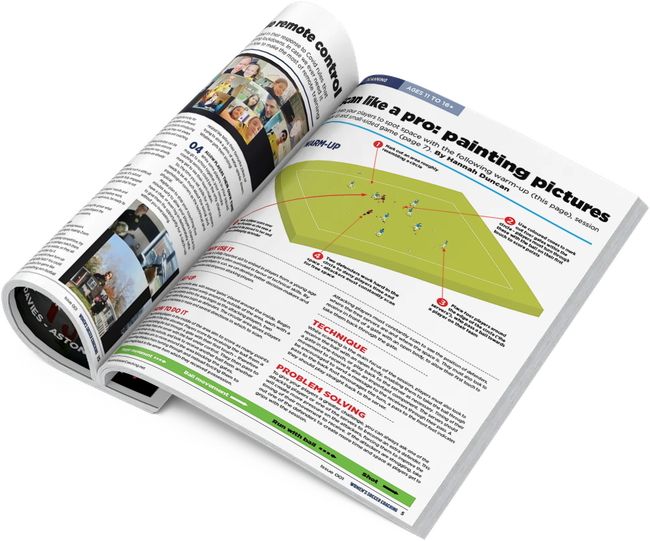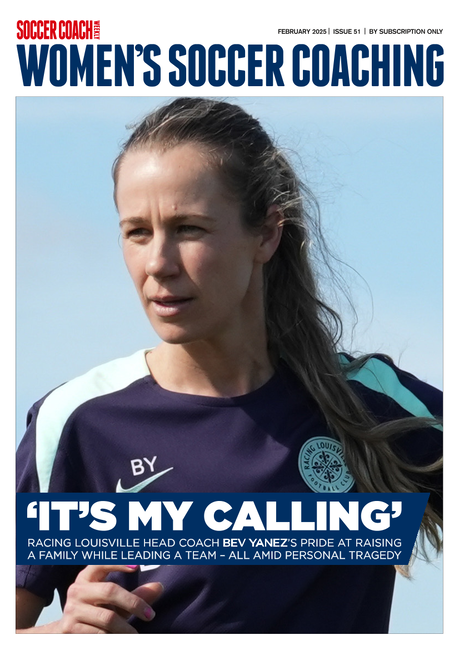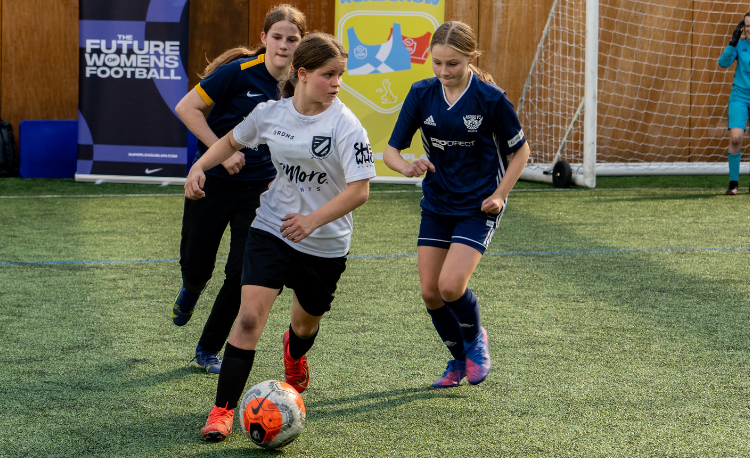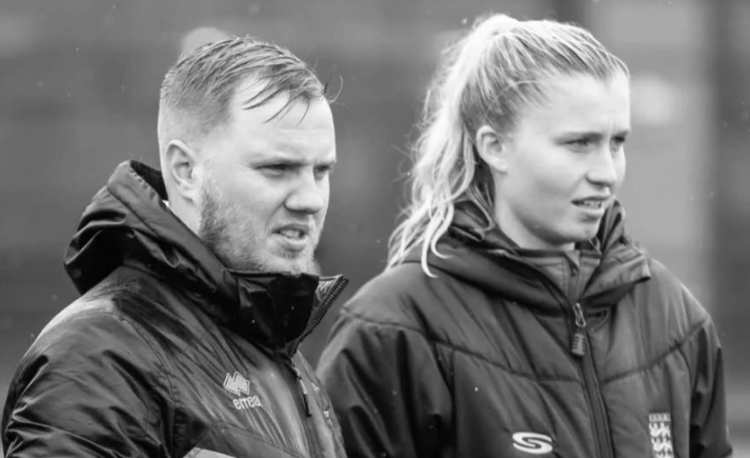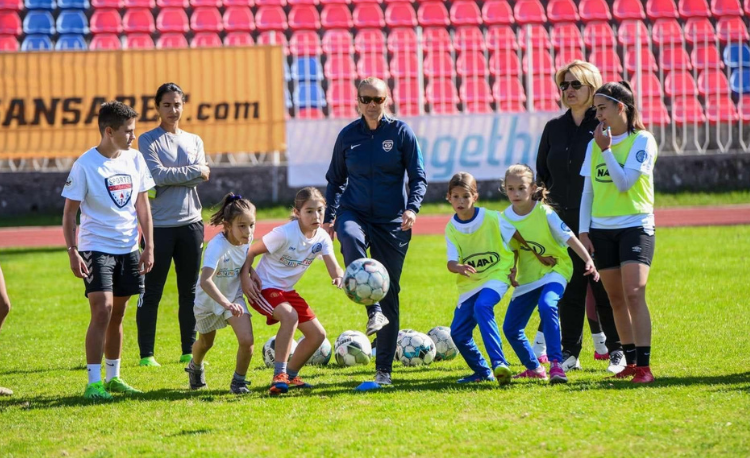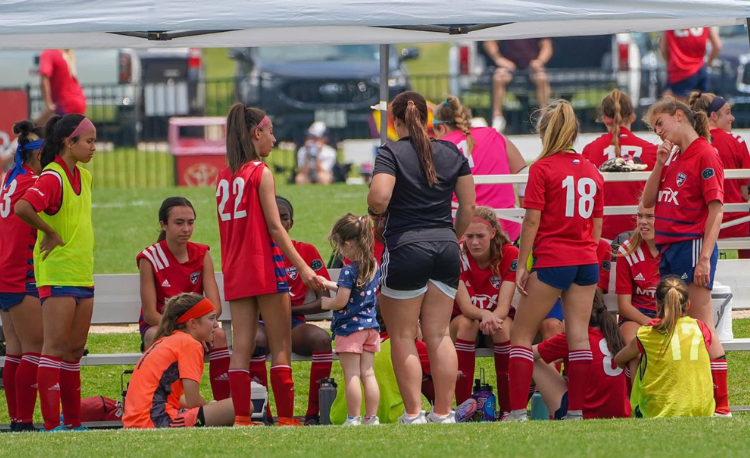You are viewing
1 of your 3 free articles
Emily Husband: Poker-faced winner
‘Emotionless’ on the sidelines, but with a competitive streak that has taken her from youth soccer to the elite level, Central Coast Mariners head coach Emily Husband takes Carrie Dunn on a journey through her career...
Emily Husband is one of the few females coaching at the highest domestic level in Australia, and is the current A-League Coach of the Year, after a stellar debut season with Central Coast Mariners.
The award was well-merited, given she had to build the Mariners’ squad from scratch in the off-season and then led them to a fifth-place finish and the post-season semi-finals.
Her coaching ambitions began, like many, when she realised her dream of playing professionally was unlikely to come to pass.
Born in England, Emily played for Leeds United and Manchester City at youth level, and then Huddersfield Town as an adult, before flying to the US to play college soccer.
While at the University of Texas, she started doing some coaching alongside her sports science studies, picking up where she had left off at home in Yorkshire.
After graduation, she moved to New Jersey, and took her coaching more seriously.
“I made the call that I was never going to make a career of being a professional player because, as good as I was, I was never that extra level that I needed to be,” she admits.
“I thought, ‘You know what? The next best thing is going to be coaching’, and that’s where it all started.”
Emily spent three years coaching in the US, at a high school and a soccer academy – but, by the end of 2015, she was ready for a change, which led her to Australia, and a job at Sydney University.
“I would have to cut off a lot of ties...I didn’t want any underlying form of favouritism...”
There, she worked with every age group, from U10s upwards, and benefited from the guidance of director of coaching John Curran, who was the one to tell her she was ready to be head coach of the first team.
“He approached me and said, ‘I think you’re ready for it,’” she recalls.
Emily herself was reluctant, thinking she needed more time, but, with Curran’s encouragement, she took on the role in January 2020.
The biggest learning curve, Emily says, was player management, particularly when she first took charge of players who were also friends and colleagues.
“I had the conversation with them [and said] that, regardless of where our relationship was as friends, I would have to cut off a lot of the ties, because I didn’t want there to be an underlying form of favouritism towards any players.
“I probably gained a little bit of respect from the players – they can see what it is you aspire to do within the role, not just with words, but actions as well.”
Emily also reflected on her own managerial style when she began the day-to-day work on the touchline and the training ground.
She said: “Managing players is one of the hardest tasks of the job – keeping all players motivated throughout the entire season, in order to get the best out of them, and continuing that development, even when they’re not always getting the game time they feel they deserve or obviously want.

“Consistently giving players feedback, and keeping them on that path of development, is probably one of the most challenging things I’ve come across, and will continue to do so, because it’s a massive part of what you do.
“All the on-field things are probably the most simple part of the job – getting a session planned, understanding how you want to play, where your strengths lie and how you can play to them each week, and, likewise, masking your weaknesses and being able to limit the amount that they get exposed. That’s the easy part of the job.”
She made it look easy, too, being named NSW NPL 1 Coach of the Year, before being invited to take over as head coach of Central Coach Mariners in the A-League in 2023.
Switching from youth to elite soccer meant altering her expectations.
Previously, she had approached coaching with the mindset that development should be prioritised over winning; in the A-League, however, results are paramount.
Emily does, however, confess that her years in junior football, where she had to hide her competitive nature, have helped her develop a poker face on the touchline now.
“I’m almost emotionless because I’m just so engaged in the process of the game and what I’ve got to coach and apply,” she grins.
“That’s been another emotional journey for me, to learn how to be competitive again. It’s not that I didn’t care [about results in youth football], because you always care, but the way that you handle yourself in certain situations has to be different.”
In May, Emily was invited to join Joe Montemurro’s coaching staff for the A-League Women All-Stars match against Montemurro’s former club Arsenal, in front of more than 40,000 at the Marvel Stadium in Melbourne.
She calls it a “fantastic experience”, not just for the players to test themselves against world-class opponents, but also for her.
“It was a no-brainer to work alongside Joe Montemurro, who’s had such an amazing career so far in women’s football,” Emily said.
“I was just so excited and really honoured to be asked.”
The coaches had a week with the players ahead of the match, which might sound like a short time – but, as Emily points out, it is the usual turnaround time between matches in the season.
The biggest challenge, she says, was that the A-League players were already a few weeks into their off-season, so coaches needed to consider their effort and loading.
“[We had] an ability to drip-feed a couple of ideas into their heads of what we wanted to try and exploit, and how we wanted to go ahead with our game plan,” she explains.
“We looked at areas that we wanted to try to exploit against Arsenal. We knew it was going to be a tough game, and it was also about the girls showcasing their talent.”
Of course, it was also about a new coaching team, quickly learning to work together, plan their sessions and lead their squad.
Emily said: “We had quite a few meetings in the lead-up to the camp.
“That was where we established what training was going to look like, what the week was going to look like, where we’d all come in.
“Joe was very relaxed. He was happy to allow myself and [fellow assistant coach] Kat Smith to take parts of the session.
“He was always asking us for feedback and what our thoughts were. It was a really collaborative approach.”
It was also good to see two women – the only two female head coaches in the Women’s A-League – alongside the vastly experienced Montemurro.
Related Files
Emily has spoken out previously about the need to develop a female coaching pipeline. Although she shies away from assuming the mantle of role model, she says she would like to have a career journey that aspiring female coaches can observe and seek to mirror.
She knows, though, it can be hard to attain.
“To become a professional coach, you commit so many voluntary hours, on and off the field – [listening to] podcasts, [reading] books, spending time out on grass, shadowing other coaches.
“That is all unpaid and it does take a lot of work. Not everybody is always supported financially to be able to do that.
“A lot of people need to get themselves into work earlier, because they need to pay the bills. If they are by themselves, it’s not attainable to spend that much time volunteering.
“Even ticking off all your licences and coaching badges is a massive expense, and, as a coach, you don’t get paid much as it is.
“I don’t think 15-year-old Emily would ever believe I’d be where I am right now...”
“To then spend a fairly decent amount of money on getting through all your coaching licences, that’s a challenge as well.”
Emily’s coaching journey is something she would never have anticipated when she was growing up.
Asked what advice she would give her 15-year-old self, she admits that younger Emily would not have listened to anything that was not about her becoming a professional soccer player herself.
“I don’t think 15-year-old Emily would ever believe that I’d be where I am right now, that’s for sure,” she says.
“Looking back on everything I’ve done, I’ve always been true to myself.
“I’ve always known that, if I’m going to do this, and I want to make a full-time career out of coaching, then I’d have to put the hard work, the hard hours, in.
“But, when you work in a job that you thoroughly enjoy, it doesn’t always feel like work.
“I’d tell 15-year-old Emily to continue. Even though there’s going to be hard days, continue to knock on that door and keep being true to yourself, because things will happen.
“You do need a little bit of luck, I think, in your football journey, but persistence is always a good thing.
“[It’s all about] hard work and staying true to yourself.”
‘WE GET YOUNG PLAYERS IN AND GIVE THEM A PLATFORM TO PERFORM’
Australia’s A-League is semi-professional, and Emily says it currently acts as a showcase for younger players to eventually shine elsewhere, but with a possibility of expanding and becoming an attractive prospect for elite, older players, too.
“I look at it as a developmental league,” she says. “We get young players in and give them the platform to perform.
“If they perform and then go and seek a better opportunity, fantastic, because that’s ultimately where we’re at.
“It may be a bit different if we get to a point where we are a full-time league, and I can offer the same thing [as a club in another country] and they still want to go.
“But of course, it’s football, and people always make decisions [based] on what’s best for them.
“No matter how big or small their football journey, and the part I have played in it, I will always be happy when players move on to bigger and better things.”
‘that’s where we want to be’ – emily targeting a-league’s growth to enable more options for players and coaches
Emily keeps an eye on what is happening in England’s WSL and the US’s NWSL, not just to enjoy the soccer, but also to consider where the A-League might progress in years to come.
She said: “Look at the growth the WSL has had in the last two years post-the Euros [in 2022, which England, the host nation, won]. It’s been fantastic to see.
“You can see we’re breeding female coaches at home. That’s because there’s more full-time jobs available in football.
“The more it grows, the more money that gets put in. It’s been able to give these female coaches the opportunities to actually earn a living, doing something that they love.
“The US is another place where, obviously, women’s football has just grown over the last 25 years.
“They were probably ahead [of the rest of the world] five or 10 years ago – they were the sort of program that everyone’s striving to be.
“Then you look at the way that Angel City have conducted themselves and come into the league, the crowds they’re getting and the amount of money that’s coming into the club – that’s where we want to be, that’s what we want to create.”
Newsletter Sign Up
Newsletter Sign Up
Discover the simple way to become a more effective, more successful soccer coach
In a recent survey 89% of subscribers said Women's Soccer Coaching makes them more confident, 91% said Women's Soccer Coaching makes them a more effective coach and 93% said Women's Soccer Coaching makes them more inspired.
*includes 3 coaching manuals
Get Inspired
All the latest techniques and approaches
Women's Soccer Coaching offers proven and easy to use soccer drills, coaching sessions, practice plans, small-sided games, warm-ups, training tips and advice.
We've been at the cutting edge of soccer coaching since we launched Soccer Coach Weekly in 2007, creating resources for the grassroots youth coach, following best practice from around the world and insights from the professional game.




